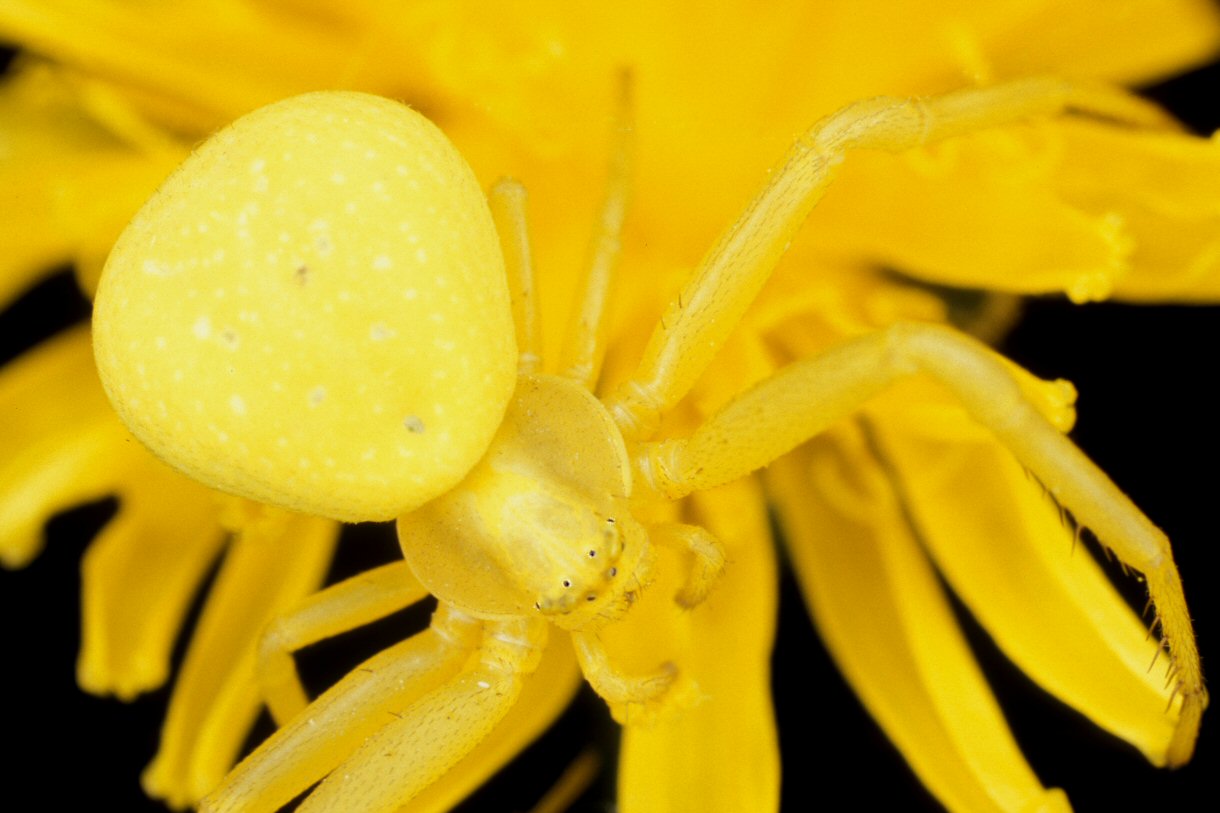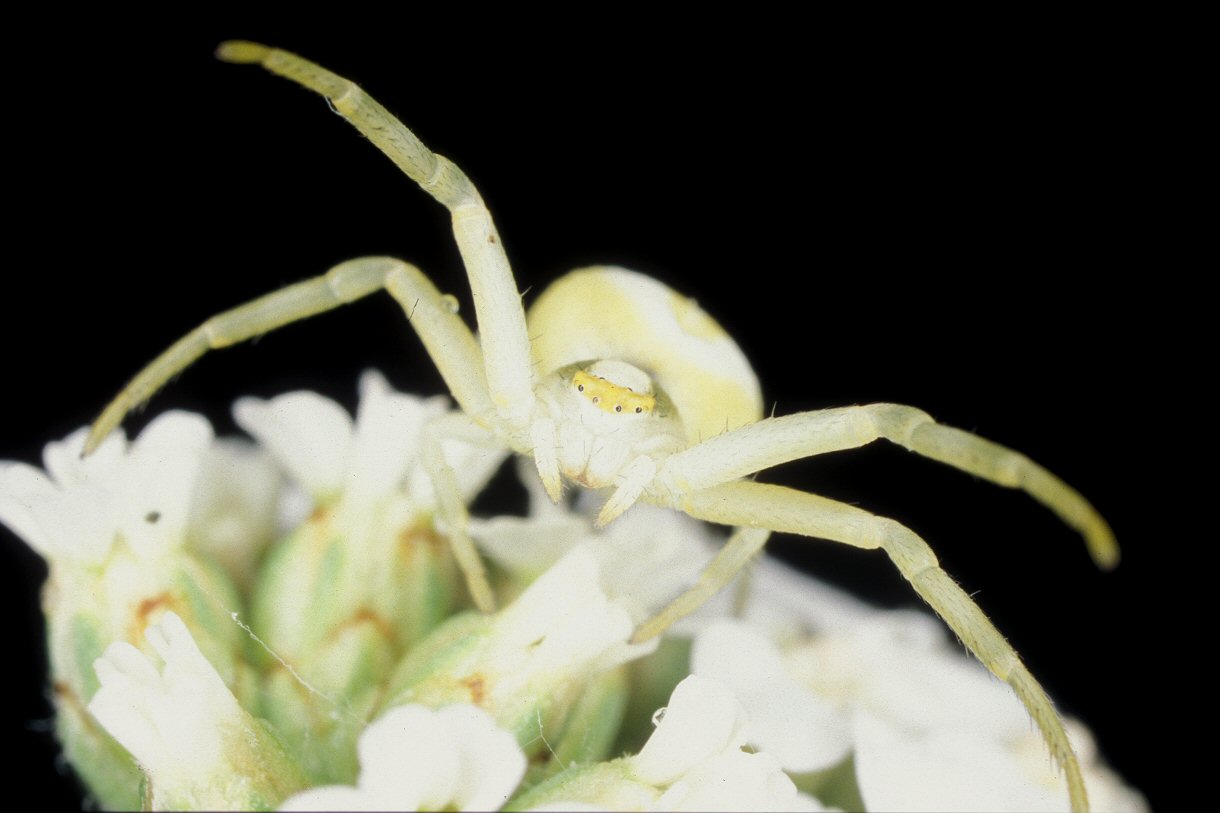Sexual Cannibalism in Spiders
Dani Cardia and Charles Morse
Biology 342 Fall 08
Theory 1: Economic Model
Mechanism: The mechanism in this model involves a female eating a male before copulation, more often than not. The female thus gains nutrients and increases fecundity when she would otherwise be malnourished. In a study of fishing spiders D. fimbriatus, 78% of all interactions involved a female attacking a courting male from a distance, 11% of those attacks being fatal, the female consuming the male (Arnqvist 1997).
Flower, or Golden Rod, crab spider Misumena vatia juvenile (below) and mature female (top). Images courtesy of Jørgen Lissner.
Adaptive Value: In this case, there is adaptive value in that the male, when eaten, will supply his mate with a food source when there is no other prey, and his progeny will be more fit. However, this adaptive value only occurs in populations where prey is scarce and the female encounters many mates over her lifetime. This insures that the female will be able to remain healthy by eating possible mates but still will be able to mate successfully. The model of evolution involved here seems to correlate with the theory of West Eberhardt (West Eberhardt 2005) in which evolution is a product of phenotypic plasticity in response to environmental cues which are eventually selected for in the genetic code of a species. For example; females will eat males because food is scarce in their environment, and this behavior will be observed for many generations not because of genes, but because the environment is selecting for the behavior. Thus when a genetic mutation occurs that correlates with this behavior, it will be immediately picked up in the general population. Ontogeny: This economic model has been shown to occur in populations with males smaller than females, such that the females may consider them prey. However, extreme sexual size dimorphism (SSD) is not expected because this model applies to populations in which females eat males before copulation. Thus, small males would not necessarily be selected for as they are susceptible prey. It is debatable why the males remain small in these populations. but is evident there may be other selective pressures at work. In the case of M. vatia (pictured above), the "gravity hypothesis" for SSD holds true: as males must climb farther to reach their mates, who live in high perches, there is scramble competition between males, and small size is favorable (Mayo-Larano 2002).
|

